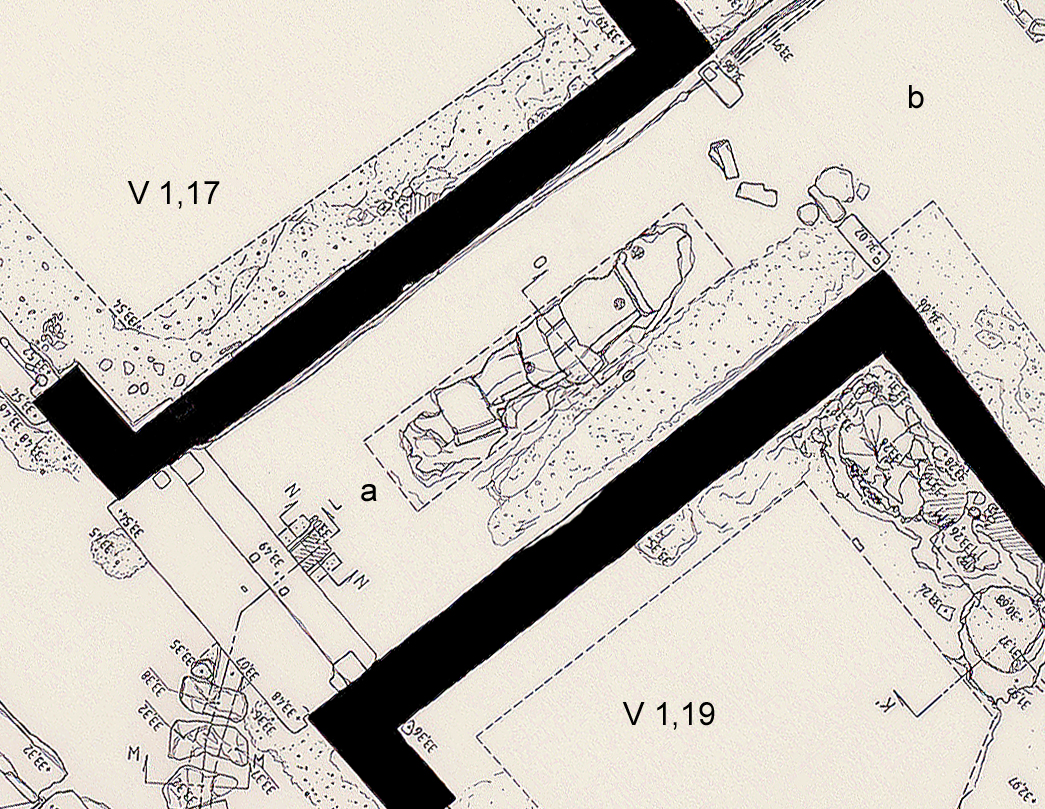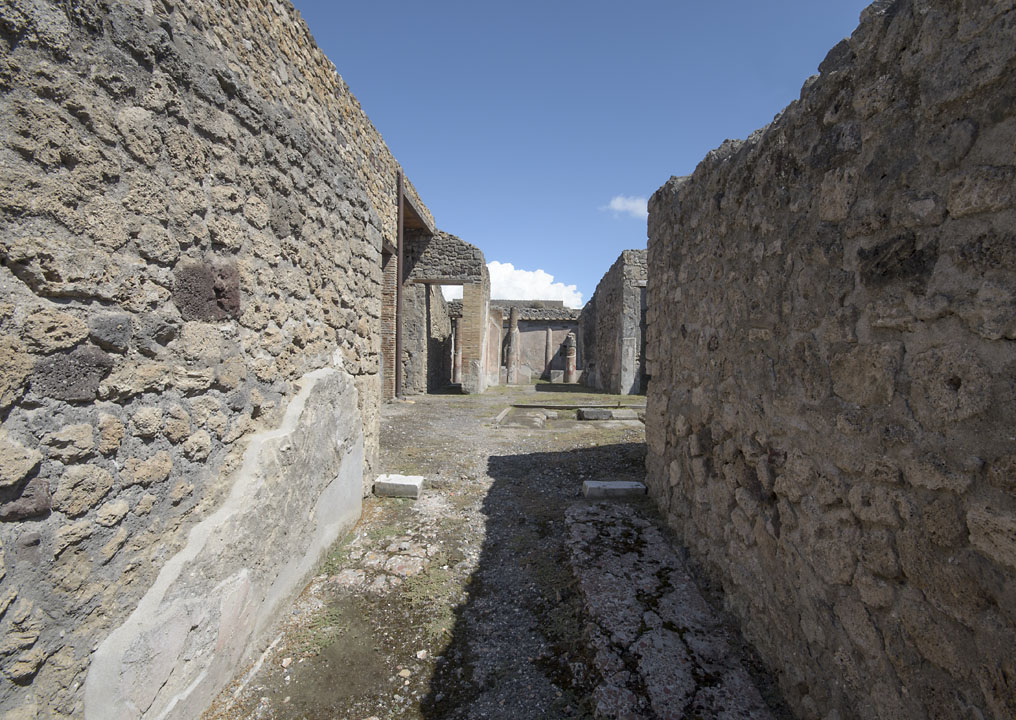Room a (fauces)
Description
Thomas Staub
This room is the corridor leading from the main entrance (V 1,18) on Via di Vesuvio to the atriumb. Since this westernmost part of the house together with the two flanking tabernae (V 1,17 and 19) was badly damaged by a bomb hit during WW II, most of the walls are modern reconstructions. The restaurators hereby used both building material from the actual location but also from other areas of the ancient town: „4. Acquisto e trasporto di materiali da costruzione delle aree attigue e da quelle del Magazzino di Porta Stabia.' (From the entry for the Dec. 1947 in the gonrnali degli scavi).
The dorrframes towards the street (the dooropening takes up the entire width of the fauces just as towards the atrium) are partly preserved and partly reconstructed in large blocks of Sarno stone, most probably in accordance with the ancient structure. The side walls are reconstructed in opus incertum, where by the composition of the rubble not necessarily reflect the conditions of AD 79.
The walls were decorated with paintings, probably of the fourth style, as can be deducted from the descrition of A. Mau and their reproduction in the cork modell in the National Museum in Naples. They showed a red dadoo and a black middle zone, divided into three fields, each decorated with a tondo showing a still-life painting depicting various kinds of vessels and tools.
The floor is made of coccio pesto with inserted coloured stones and irregulary strewn white tesserae. Underneath the floor a chanel leading from the impluvium to the street disposed of overflow water from the cistern. Parts of the floor covering this chanel is destroyed.
Along the north wall parts of the floor was removed to allow for the insertation of a lead water pipe, leading into the atrium and from there farther into the rear part of the house. Since the pipe comes from the north, probably from underneath V 1,17 it seems most probable, that the house received its akveduct water from the water tower in the south east corner of insula VI 16. If this pipe indeed belongs to the original aqueduct - water installations of the house, than the floor, which had to be broken up for its instalations must date to not later than the Augustan period (on the dating of the water system see below on the excavations in the peristyle).
auces
L N-Wand: 5.49 m
L S-Wand: 5.37 m
B Öffnung zur Strasse: 2.01 m
B Öffnung zum Atrium: 2.03 m



